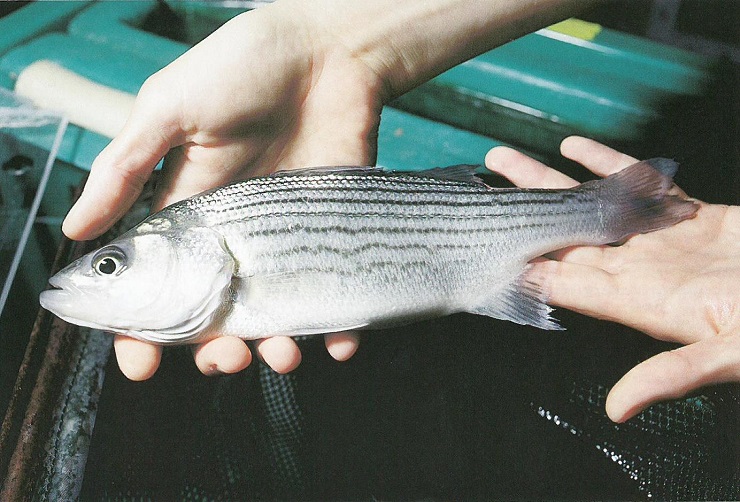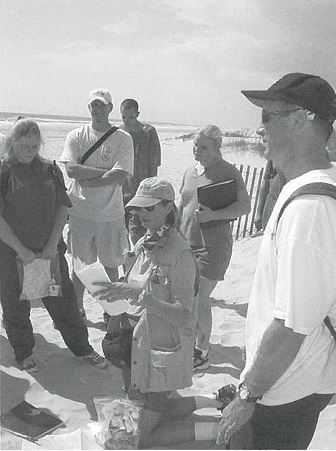MARITIME MORSELS: Shucking Oysters, Clams Like a Pro
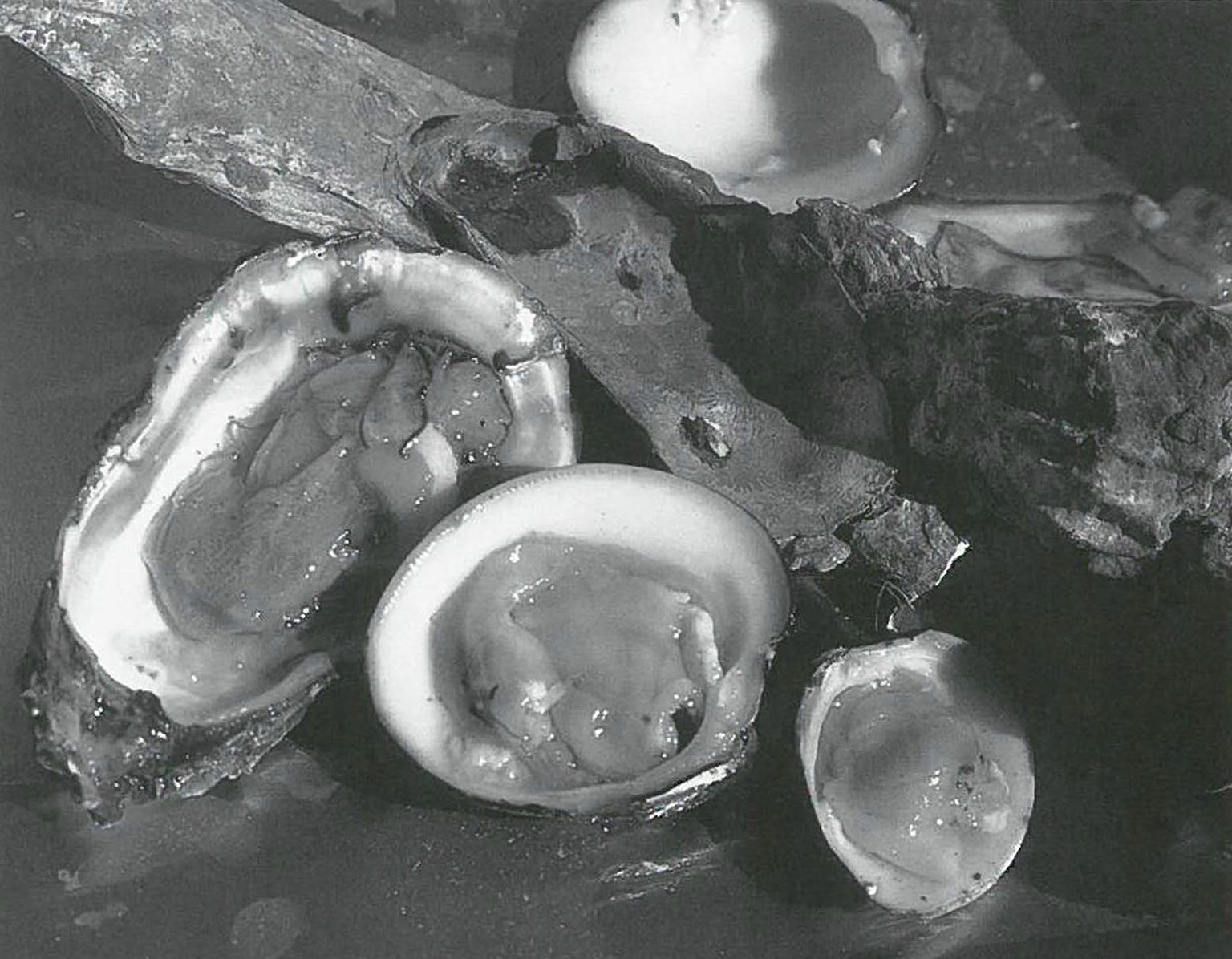
During the winter months, oysters taste their finest. However, it requires a little work to shuck them.
At the annual Seafood Quality and Safety Workshop for environmental health specialists at Pine Knoll Shores, Wayne Mobley demonstrated how to shuck oysters and clams like a pro. The workshop was co-sponsored by Sea Grant, the UNC-CH School of Public Health, the N.C. State Seafood Lab and the N.C. Shellfish Sanitation Section.
Mobley, a state environmental health specialist, says the most difficult oysters to shuck are the intertidal oysters, also called “clusters” or “coon oysters” by natives. These long, narrow oysters have a brittle shell and sharp lip.
Oysters come in two sizes — “select” or large, and standard. Before shucking any oysters, scrub them thoroughly with a stiff brush under cold, running water. Then get a sharp knife. Mobley says it is important to hold the knife properly — with your thumb close to the tip of the knife.
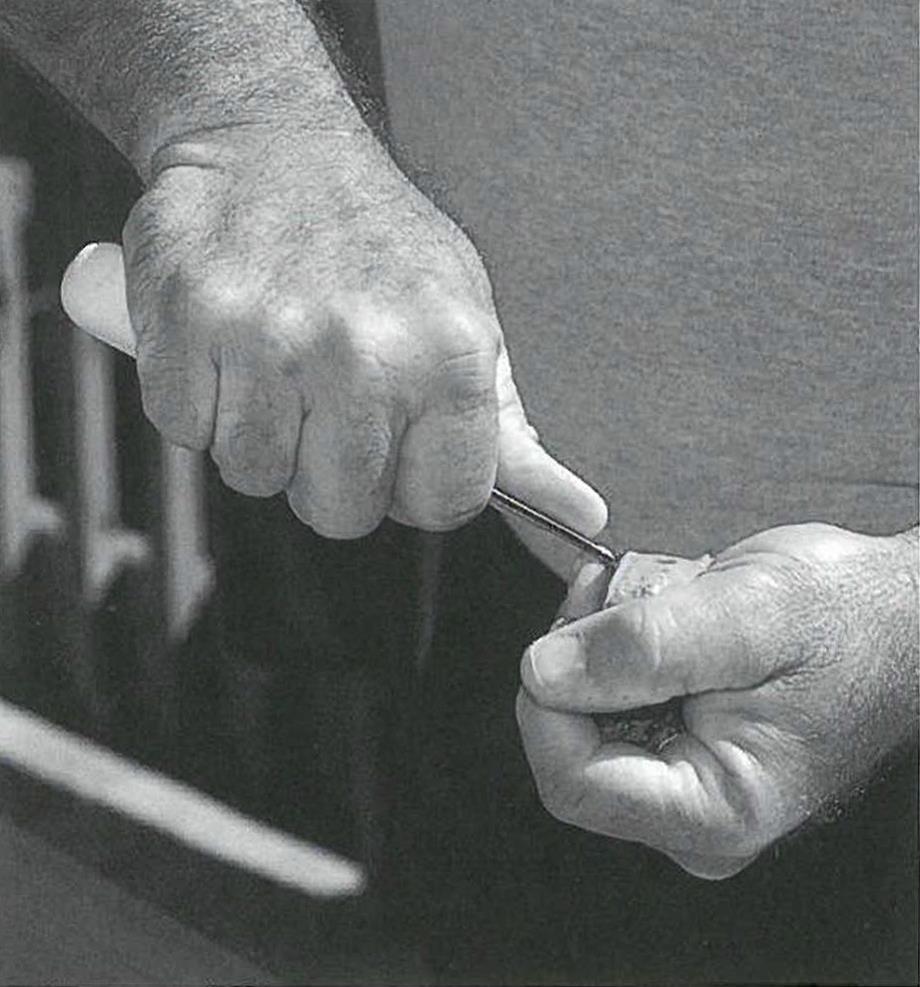
”This will prevent the knife from sticking in your hand if the shell breaks,” says Mobley. “Place the tip of the knife in the hinge or along the lip and twist the knife to open the shell. Once you have entered the shell, continue twisting the knife and cut the abductor muscle on both shells.”
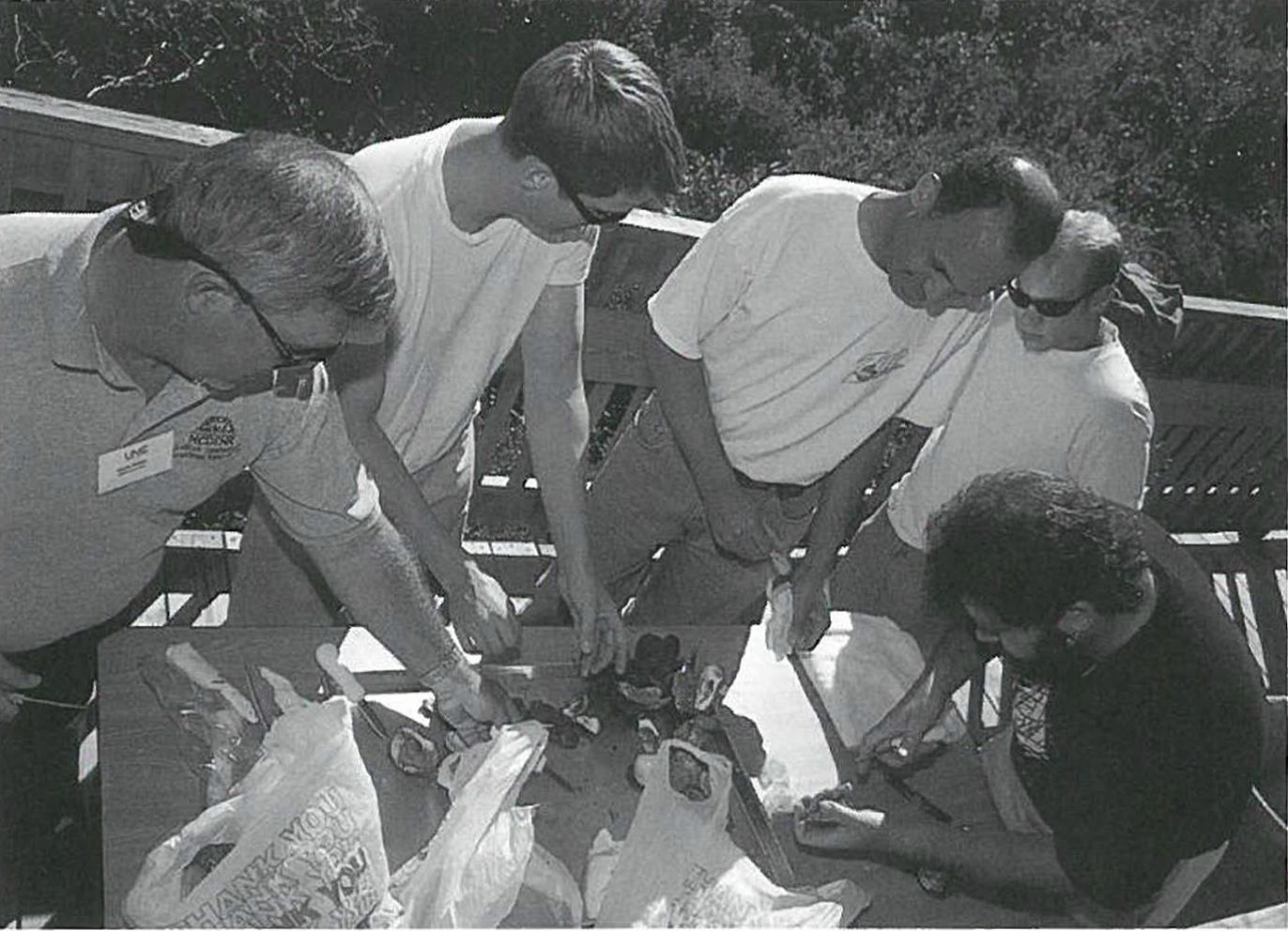
Raw clams also can be difficult to open. “Just below the hinge is a ‘soft, dark’ spot that is easy to identify,” says Mobley. “Stick the tip of the shucking knife in this location. With a lot of down force, start twisting the knife until the shell separates. Then cut the abductor muscle loose from both shells.”
Both clams and oysters can be heated in the microwave for just a few seconds, shocking the animal and thus causing the abductor muscle to release the tension on the shell, according to Mobley.
“Clams also can be frozen and then thawed to facilitate the shucking process,” he adds. “This works very well for making clam chowder or baked clams.”
Joyce Taylor, a retired North Carolina Sea Grant consumer seafood specialist, shares these tasty ways to prepare freshly shucked oysters and clams. Taylor is compiling a book of her Sea Grant education materials and recipes.
Broiled Oysters with Fine Herbs
- 3 dozen select oysters
- 1/4 pound margarine or butter, softened
- 3/4 cup green onions, including tops, finely chopped
- 1/4 cup finely chopped parsley
- 1/4 cup finely chopped fresh tarragon
- 1/4 cup fresh cracker crumbs
- 2 teaspoons fresh lemon juice
- rock salt
Scrub oysters thoroughly with a stiff brush under cold running water. Shuck oysters. Place deep half of shells in a bed of rock salt in a baking pan. Mix together margarine, onions, parsley, tarragon, crumbs and lemon juice.
Divide evenly over oysters. Broil about 4 inches from heat until done, about 5 to 8 minutes.
Serves 6.
Scalloped Oysters
- 1 pint standard oysters (or selects, cut in half)
- 1/3 cup oyster liquid
- 35 fresh saltine crackers, made into coarse crumbs
- 1/4 cup finely chopped green onions
- salt
- freshly ground black pepper
- 1/3 cup heavy cream
- 1 tablespoon Worcestershire sauce
- 1/8 teaspoon Tabasco sauce
- l/4 cup dry white wine
- 3 tablespoons margarine or butter, melted Drain oysters well, reserving 1/3 cup oyster liquid.
Place one quarter of the crumbs in lightly greased small casserole dish. Cover with half of the oysters and half of the green onions. Lightly salt (remember that oysters are salty). Sprinkle with black pepper. Repeat Sprinkle with the remaining of the crumbs. Drizzle with melted margarine.
Combine oyster liquid with cream, Worcestershire, Tabasco and wine and pour over the casserole. Bake at 400 F until brown and bubbly, about 25 minutes. Serves 4 to 6.
Hearty Clam Chowder
- 2 cups chopped cherrystone or littleneck clams
- 4 slices bacon, diced
- 1/3 cup thinly sliced green onions, including tops
- 5 medium peeled and diced potatoes
- 1 stalk celery, thinly sliced
- 1 medium carrot, thinly sliced
- 1 clove garlic, pressed
- 2 cups water
- 1 teaspoon salt
- 1/2 teaspoon freshly ground white pepper
- 1 teaspoon Worcestershire sauce
- 1/4 teaspoon Tabasco sauce
- 2 cups light cream
In a large, deep pan, cook bacon over medium heat, until crisp. Remove bacon and reserve. Saute’ onions, potatoes, celery, carrot and garlic in remaining grease. Add water, salt, pepper, Worcestershire, and Tabasco. Bring to boil. Reduce heat, cover and simmer gently until potatoes are tender, about 15 minutes. Add clams and cook until done, about 10 minutes.
Stir in cream. Heat just until steaming. Do not boil. Top with reserved bacon. Serve immediately. Serves 6 to 8.
Baked Clams with Garlic Butter
- 36 littleneck clams
- 1/4 pound margarine, softened
- 2 tablespoons coarsely chopped garlic
- 3 tablespoons coarsely chopped green onion
- 1/2 cup coarsely chopped fresh parsley leaves
- 1/4 cup dry white wine
- 1/4 cup fresh bread crumbs
- 1/4 teaspoon salt
- 1/4 teaspoon freshly ground black pepper
- 4 tablespoons freshly grated Parmesan cheese
- rock salt
Scrub clams thoroughly with a stiff brush under cold, running water. Open clams and discard top shell.
In food processor, combine margarine, garlic, green onion, parsley, wine, crumbs, salt, pepper and half the Parmesan. Blend until smooth.
Place clams on the half shell in a bed of rock salt in a cooking pan. Spoon margarine mixture evenly over clams. Sprinkle with remaining Parmesan and bake at 500 F until clams are done and cheese is melted, about 6 to 8 minutes. Serves 6.
This article was published in the Winter 2002 issue of Coastwatch.
For contact information and reprint requests, visit ncseagrant.ncsu.edu/coastwatch/contact/.
- Categories:
